The Monuments Men sees a group of World War II soldiers fight to preserve the cultural artefacts that shaped Western civilization. In Hollywood terms, however, they’re in a tiny minority. Generally speaking, when a film introduces a priceless work of art it’s because they’re about to tear it, blow it up or otherwise deface it. We gathered some of the most egregious offenders below...
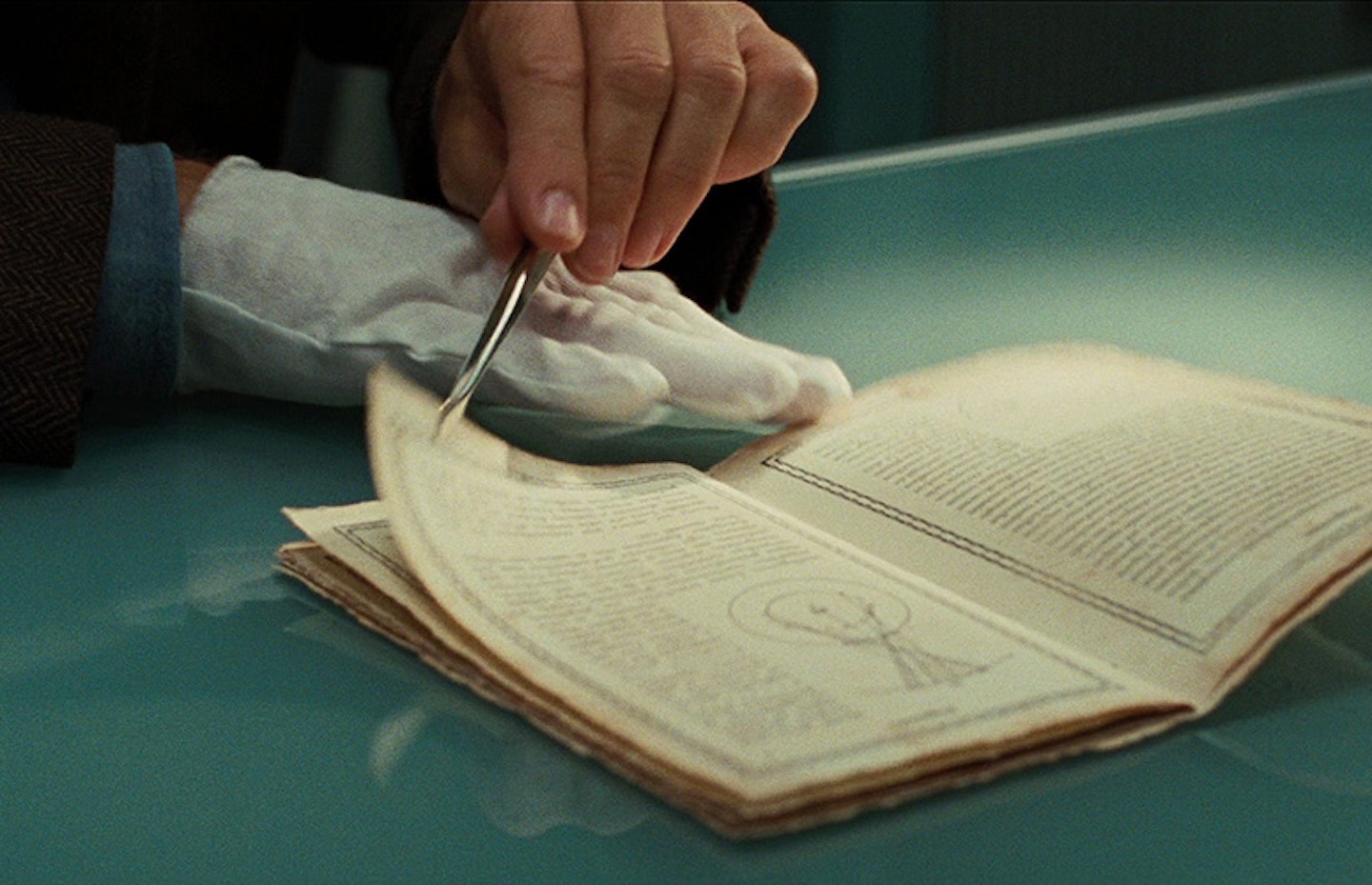
What’s the art?
Galileo’s Diagramma Veritatis, a fragile pamphlet printed “on sedge papyrus.” Which means it dissolves in water, supposedly.
What happened?
A page is abruptly ripped out of the priceless, nearly 400 year old manuscript. This, despite Robert Langdon (Tom Hanks) carefully using gloves and tweezers, and warning that, “It’s possible this is the only copy that remains”. When Empire saw this film, there were gasps of horror around the cinema at this point – but in fairness that might have been a general response to the film.
Whodunnit?
Vittoria Vetra (Ayelet Zurer). Poor old Robert Langdon only asks if she’ll note down what it says, but she’s so paranoid about Vatican officials snooping over their shoulder that she rips the whole damn page out. Was the photocopier broken? And what’s wrong with just taking a picture? Don’t they have smartphones? Anyway, Vittoria clearly inspires him: Langdon later climbs a bookshelf and topples it over, priceless old books and all, in an attempt to escape a sealed library.
What’s the bill?
Well, considering it’s almost certainly a fictional manuscript, Ron Howard and friends can rip merrily away. However, if real, it would cost a lot. A first edition manuscript of Galileo’s Sidereus Nuncius sold at Christie’s in 2010 for $662,500.
What’s the art?
“Da Vinci’s vault”, apparently. This *definitely *not made-up lair contains all of Leonardo Da Vinci’s visionary plans for inventions that contemporary society just couldn’t handle. Given that the inventions he thought the 15th century could handle included tanks, helicopters, submarines and machine guns, we assume that this vault contained blueprints for helicarriers, flying saucers and the Star Trek tricorder.
What happened?
The vault, complete with all Da Vinci’s work, has the ceiling blown in, causing the Venetian canals to flood the whole bloody place.
Whodunnit?
That’d be the Musketeers themselves. Not content with vandalizing Alexandre Dumas’ story with the addition of Renaissance diving suits, kung fu and flying bloody galleons, they also had to vandalize Da Vinci. Good work, guys, really.
What’s the bill?
Pretty ginormous. Especially when you consider that in 1994, Da Vinci’s Codex Leicester was auctioned for a record-breaking $30,802,500 to one “Bill Gates". Given what the destroyed vault is said to contain, though, we doubt if even Mr. Gates could cover the bill for this one.
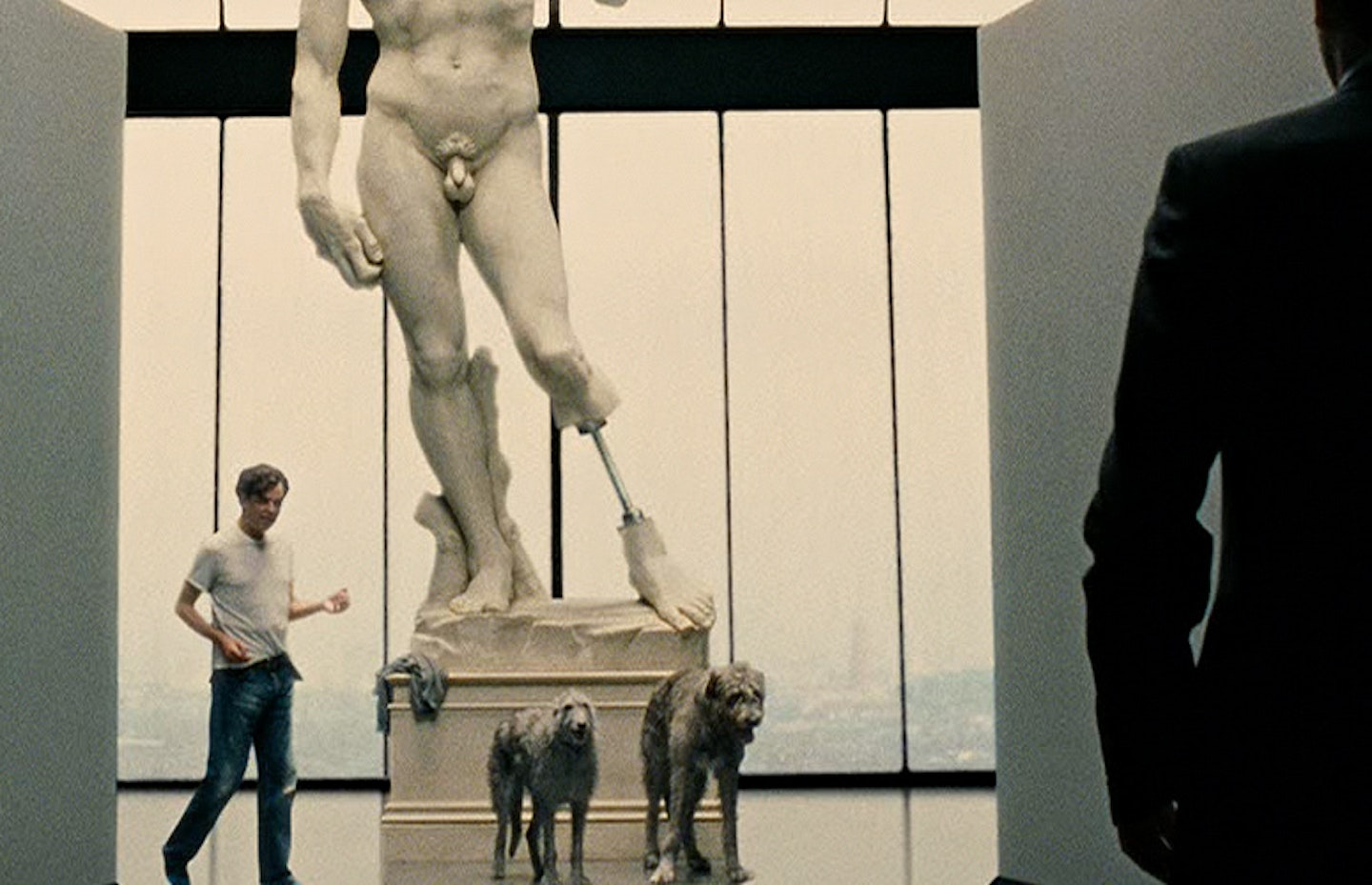
What’s the art?
Only one of the most famous sculptures in the history of the world: Michelangelo’s David, complete with oversized hands.
What happened?
It appears to have lost a shin. Where the tibia should be, poor David only has a piece of metal. But we never learn how it happened, so we don’t know who dunnit.
Whodunnit?
We just said, we don’t know. Although we *do *know that the unpredictable Nigel (Danny Huston), cousin of Theo (Clive Owen), rescued it as part of the UK government’s “Ark of Arts” programme. Sadly, he tells us that they failed to save Michelangelo’s Pietà (despite the bulletproof glass installed around that since 1972).
***What’s the bill? ***
Michelangelo was paid around £45,000 in today’s prices for chiseling this masterpiece, although today David is basically priceless. As in, even Warren Buffet or that secretive dude who owns Ikea (and reportedly may be the richest man in the world) need not apply.
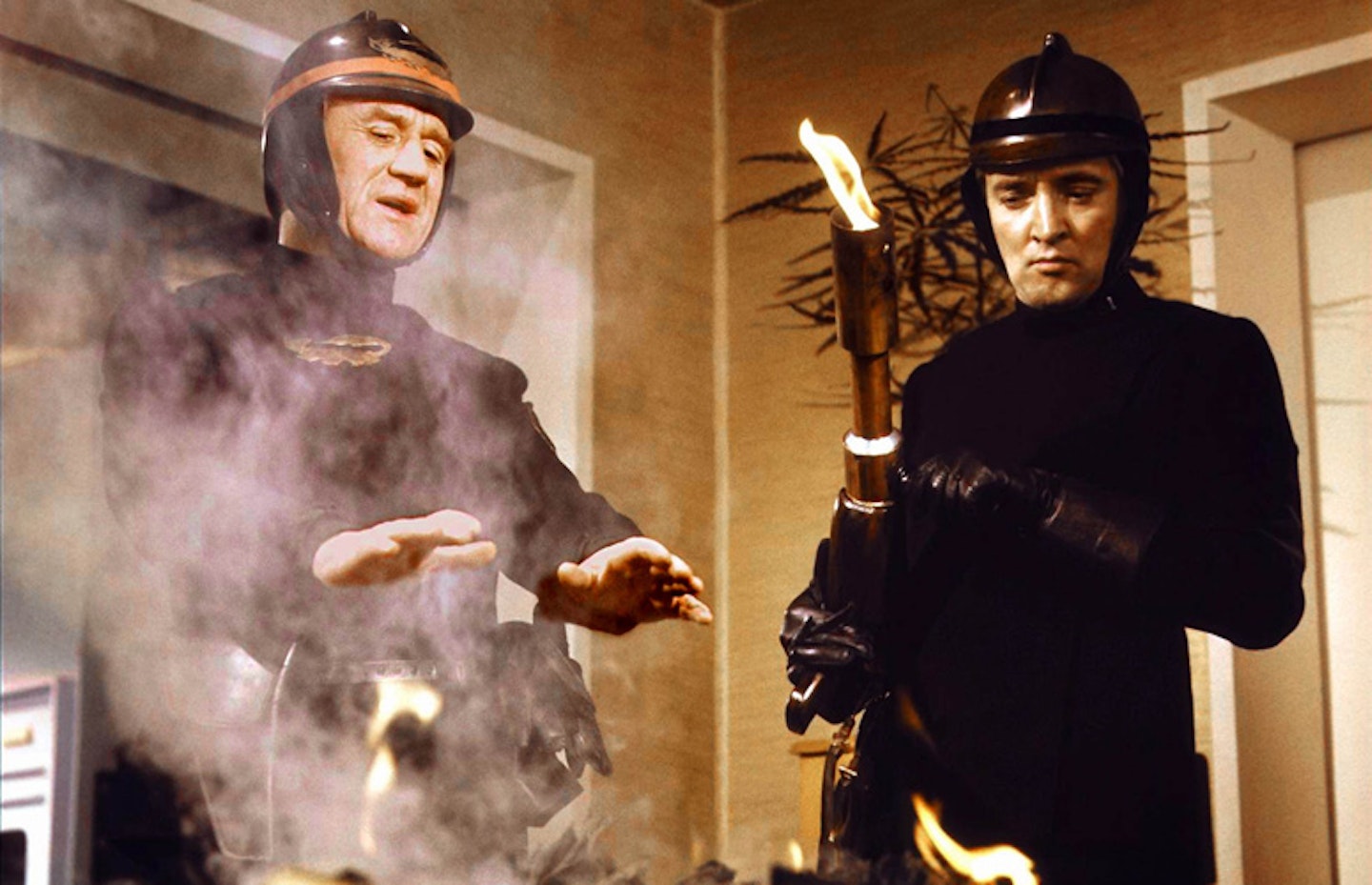
What’s the art?
Pretty much all the literature in the world. So that’d be William Shakespeare, Geoffrey Chaucer, Charles Dickens and E. L. James, all up in smoke.
What happened?
This is a dystopian future, where books are burnt by the government. Everything from fiction to philosophy is illegal, and must be destroyed (including, ironically, Mein Kampf, which we’re less upset about).
Whodunnit?
The Firemen. In Ray Bradbury’s nightmarish vision, the job of Firemen is to burn books, rather than put out fires, and they do it with relish. Except, that is, for Guy Montag (Oskar Werner), who decides to read David Copperfield and is quickly hooked. In the end, there’s a glimmer of hope, as he discovers a secret group dedicated to memorising books.
What’s the bill?
Absolutely astronomical. Aside from the many, many priceless manuscripts that have been destroyed, you’ve also got the prices of all the normal books from your local Waterstones. Even including all the 3 for 2 offers, that’s a lot of money being incinerated.
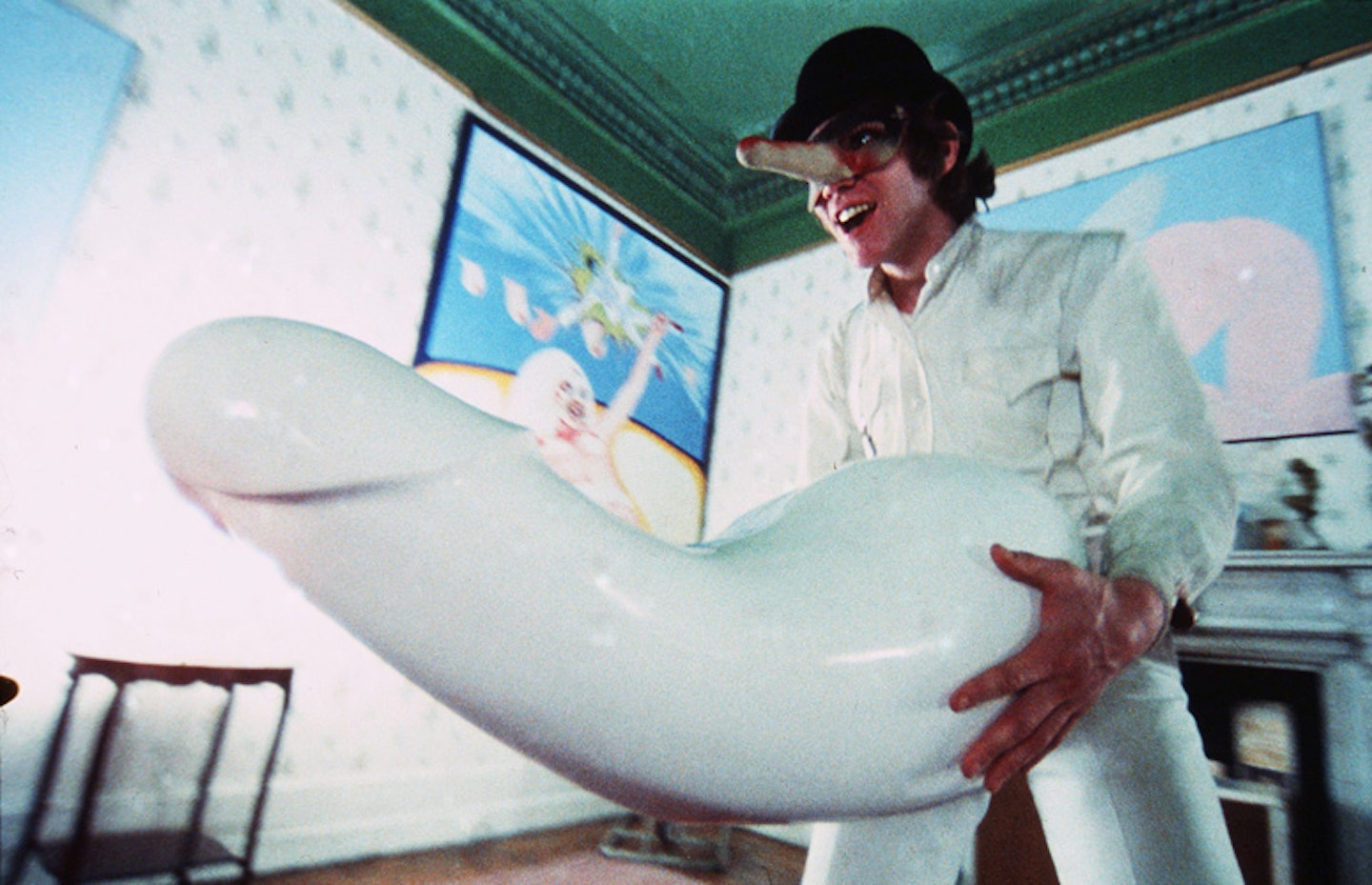
What’s the art?
Rocking Machine by Herman Makkink. Appropriately, for an artist with a “kink” in his name, it’s a giant penis.
What happened?
Alex (Malcolm McDowell) breaks into the mansion of a cat lady, who owns the phallic sculpture. He promptly attacks her with it. While the willy doesn’t look too badly damaged, it’s not a recommended way to treat your common or garden porcelain cock.
Whodunnit?
Alex DeLarge, played with malicious joy by Malcolm McDowell.
What’s the bill?
$25,000. At least, that’s what it sold for at auction in 2010, although Makkink passed away in October 2013, surely sending the price further northwards. If that makes your eyes water (and if any sculpture does, it’s surely this one), you can buy your very own replica for just under $1,500.
What’s the art?
Thomas Gainsborough’s The Blue Boy, a whole shelf of vases, a stone penis, and a lovely ragtime pianola.
What happened?
All these valuables are in the fancy apartment of suave villain Vincent Ludwig (Ricardo Montalban). The vases are smashed, Gainsborough’s painting is singed, soaked and impaled on a spikey plant, and the pianola is (presumably) burnt beyond repair. Oh, and the stone penis is pulled and then broken off a very happy looking statue.
Whodunnit?
None other than our hero, Lieutenant Frank Drebin. It’s all accidental, of course. Drebin is investigating Vincent Ludwig, and has just discovered Ludwig is plotting to kill the Queen. Unfortunately, he then manages to set fire to the evidence, and then the whole office, before being mistaken for a manic sex offender. Incidentally, he also manages to destroy a priceless fountain pen and a "Japanese fighting fish", but that's barely a drop in this bucket.
***What’s the bill? ***
While the vases all look expensive, we’ve no idea what they’re worth (the cross-hatching could mean they’re fake). As for Gainsborough’s painting, that’s worth over $8 million. At least, it was sold for $640,000 (or possibly $728,800) in 1921, which equals over $8 million in today’s money – and it has probably appreciated considerably. But whatever its value, one thing’s for sure: you can’t put a price on Leslie Nielsen wielding a big stone dildo.
What’s the art?
Arrangement In Grey And Black No. 1 by James McNeill Whistler. Better known as Whistler’s Mother.
What happened?
Thanks to a sneeze gone awry, followed by vigorous (if well-intentioned) scrubbing with paint thinner, Whistler’s Mother’s face is left as naught but a white smear. It’s then substituted for a smiley cartoon face, before a poster finally replaces the vandalised canvas, with American art aficionados none the wiser.
Whodunnit?
Unsurprisingly, Mr. Bean (Rowan Atkinson) is responsible not only for the sneeze, but also for the paint thinner and the oddly inspired solution of just using a poster instead. Bean also gets something out of it: at the film’s close, he is revealed to have kept the ruined original canvas, which resides in his room back in London.
What’s the bill?
£30 million, at least. That’s the price estimated by The Scotsman over a decade ago, so it’s no doubt a lot more now.
(On a side note, Rowan Atkinson clearly had a taste for this sort of destruction – a few years later, in Blackadder Back And Forth, he punched and kicked a terrified and confused William Shakespeare (Colin Firth), prematurely ending the playwright’s writing career. Although thanks to Blackadder lending Shakespeare a pen, the man who wrote Hamlet is transformed into the man who invented the biro.)
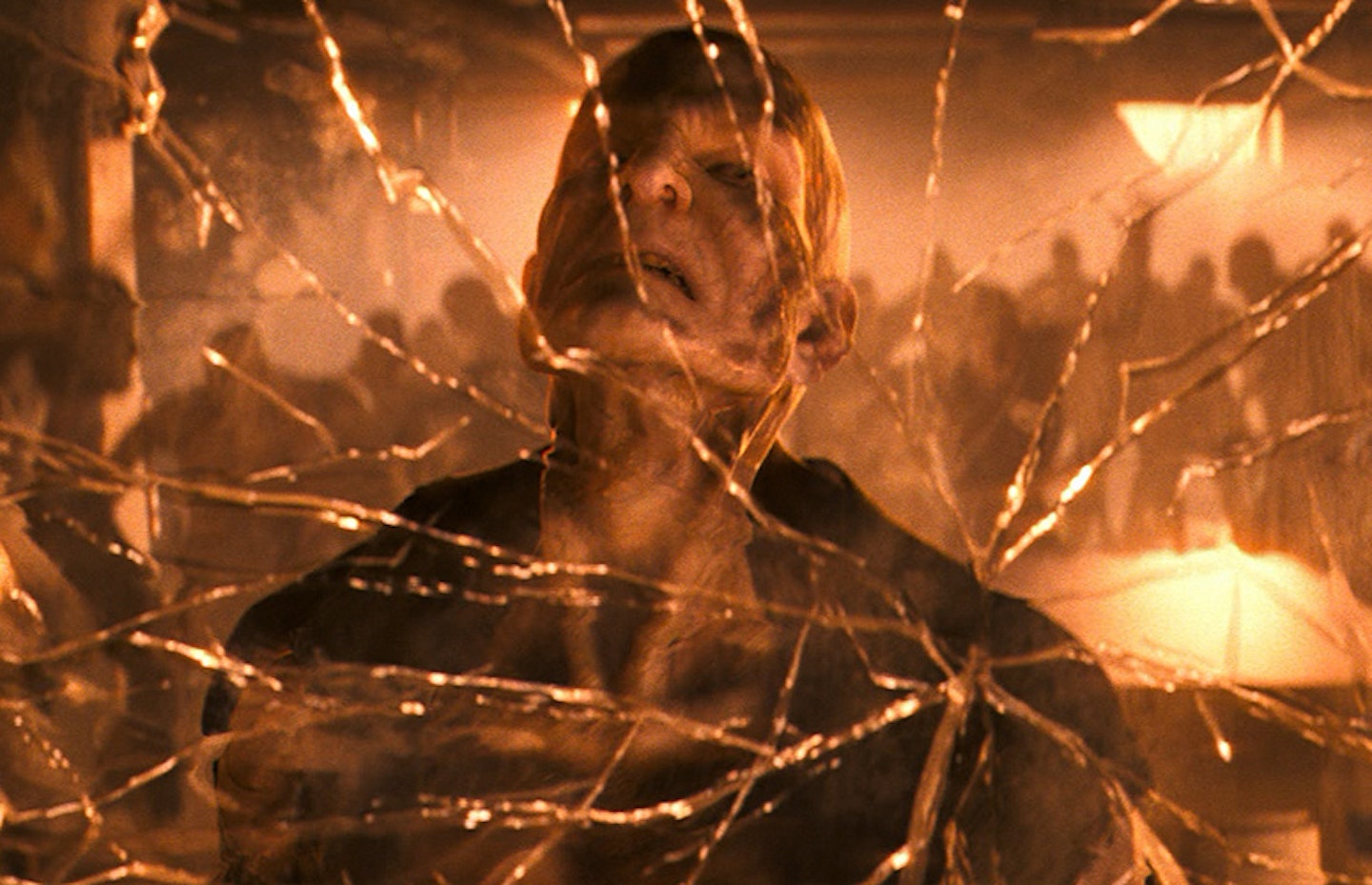
What’s the art?
Oh, just a few paintings you might know: Vincent Van Gogh’s Starry Night and A Wheatfield With Cypresses, Claude Monet’s Poplars At Giverny, Sunrise, Henri Rousseau’s The Sleeping Gypsy, and Whistler’s Mother (presumably in poster form, thanks to Mr. Bean) – to name but a few.
What happened?
A massive explosion in the basement.
Whodunnit?
Technically, Robert Neville (Will Smith) did it, despite it being his own house. Armed with a single grenade, he runs at the invading “Darkseekers” and blows up himself and the whole bloody lot.
What’s the bill?
While the price of most of Neville’s collection isn’t clear (other than it being extremely high), A Wheatfield with Cypresses was sold to the Metropolitan Museum of Art for $57 million in 1993. Add to that not only the rest of the paintings, but also a lovely big town house on Washington Square (which could cost over $16 million), and you’ll be well into nine figures.
What’s the art?
Pretty much all art in the world. But of what we actually see destroyed onscreen, this would include: a nice copy of Yeats poetry, a lovely vinyl of Beethoven’s 9th, and a huge pile of paintings, including Bouguereau’s The Story Book and Da Vinci’s Mona Lisa.
What happened?
The Yeats poetry is shot through with a bullet (on its way to Sean Bean’s face), the Mona Lisa and many other paintings are incinerated, and the vinyl also meets a fiery end.
Whodunnit?
Christian Bale, mostly. He shoots the Yeats (and the Bean), and has the paintings and the Beethoven set aflame.
What’s the bill?
The Mona Lisa is, like David, utterly priceless. On the other hand, you can get the collected works of Yeats for less than £4, and a vinyl of Beethoven on eBay for under a tenner.
What’s the art?
Everything in the legendary Louvre museum in Paris. So that’d be the Mona Lisa (she hasn’t had the best luck in films), Delacroix’s Liberty Leading The People, the Venus de Milo, and around 380,000 other objects. The Eiffel Tower and Arc de Triomphe are also shot to bits for good measure.
What happened?
A missile hits the base of the Eiffel Tower, which promptly topples over to crush the Arc de Triomphe. When our villainous terrorist escapes into the Louvre, another missile hits directly into the famous glass Pyramid, reducing it to le rubble. Those of you who are not familiar with Paris will be glad to know that the geography of the city makes the first part impossible and the second part unlikely without a *very *big missile.
Whodunnit?
Our blundering, gung-ho heroes, Team America themselves. Specifically, it’s Chris who shoots at the Eiffel Tower – he’s aiming for the terrorist with a suitcase of WMD, who then scuttles inside the Louvre. Sarah then fires a missile from her plane to finish the job.
What’s the bill?
Talmadge O’Neill, co-founder of investing company Juvo Capital, estimates that the total value of the Louvre’s contents is between $35 and $100 billion. Oh, and artwork (and building) aside, the “brand” of the Louvre has also been estimated at $520 million. So we should be looking at a total cost of well over $100 billion even before touching on the other torched monuments.
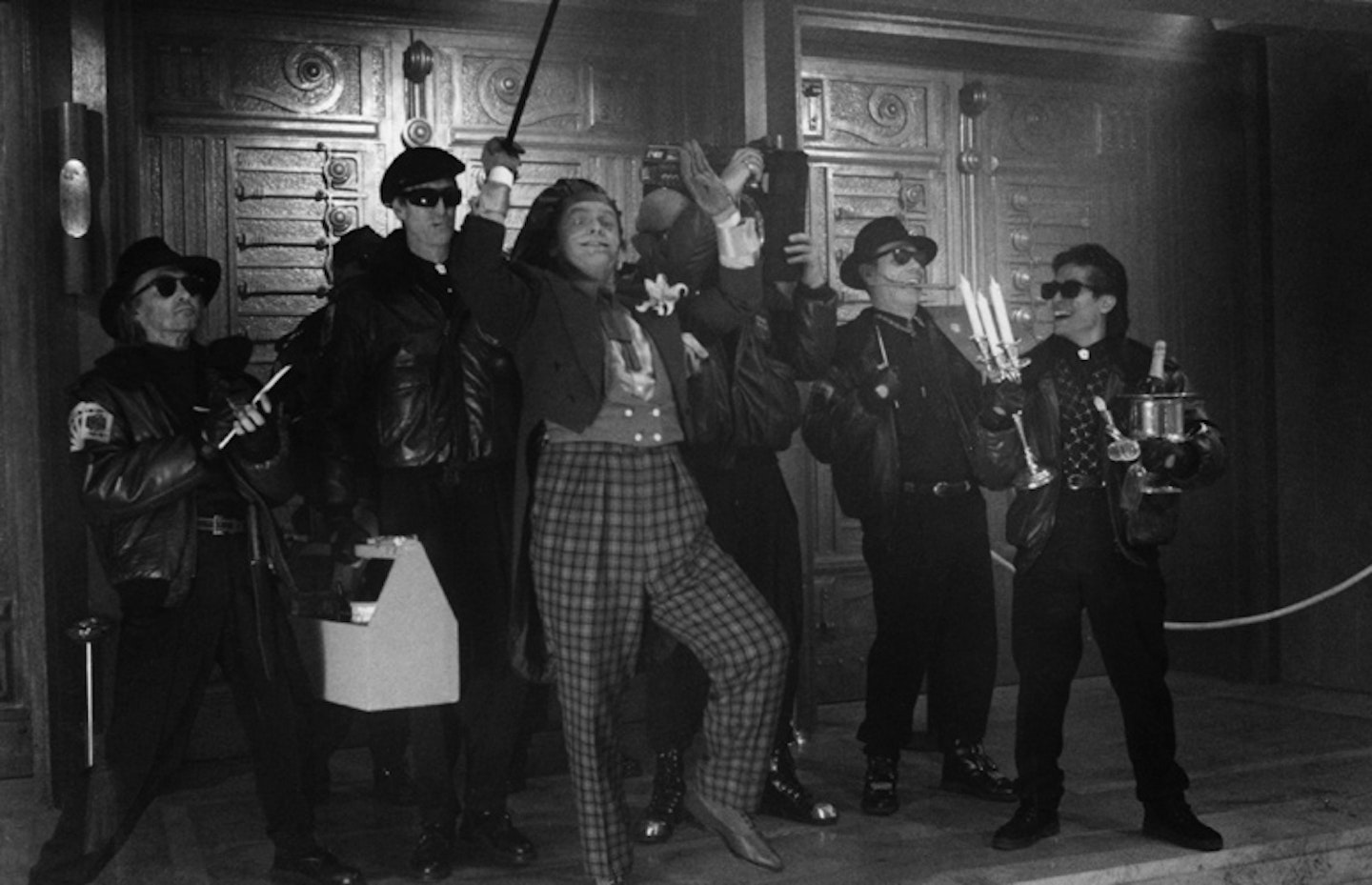
What’s the art?
Various sculptures and paintings, including: a Rembrandt self portrait from 1669, Edward Hopper’s Approaching A City, Vermeer’s Woman Holding A Balance, Renoir’s Pink And Blue, and Gainsborough’s The Blue Boy (previously seen being drenched and impaled by Lieutenant Frank Drebin). Hat tip to Simon Yates on Pinterest for identifying these.
What happened?
Gotham’s “Flugelheim Museum” (think Guggenheim) is broken into. Chaos ensues, including the smashing of sculptures, canvases scrawled with paint, and – worst of all – the playing of 'Partyman' by Prince on a boombox. Only one artwork is deliberately spared: Francis Bacon’s Figure With Meat.
Whodunnit?
The Joker (Jack Nicholson) and his henchmen.
What’s the bill?
As The Naked Gun showed, it’d cost over $8 million for The Blue Boy, while the Vermeer was sold way back in 1696 for 155 guilders – a fairly high cost at the time. This is small change, though, compared with Rembrandt: a recently rediscovered self-portrait of the Dutch master was valued at over $30 million. Still, at least The Joker was wise enough to save his Bacon: the painter’s work has repeatedly broken records at auction, with his Three Studies Of Lucian Freud selling for nearly £90 million in 2013.
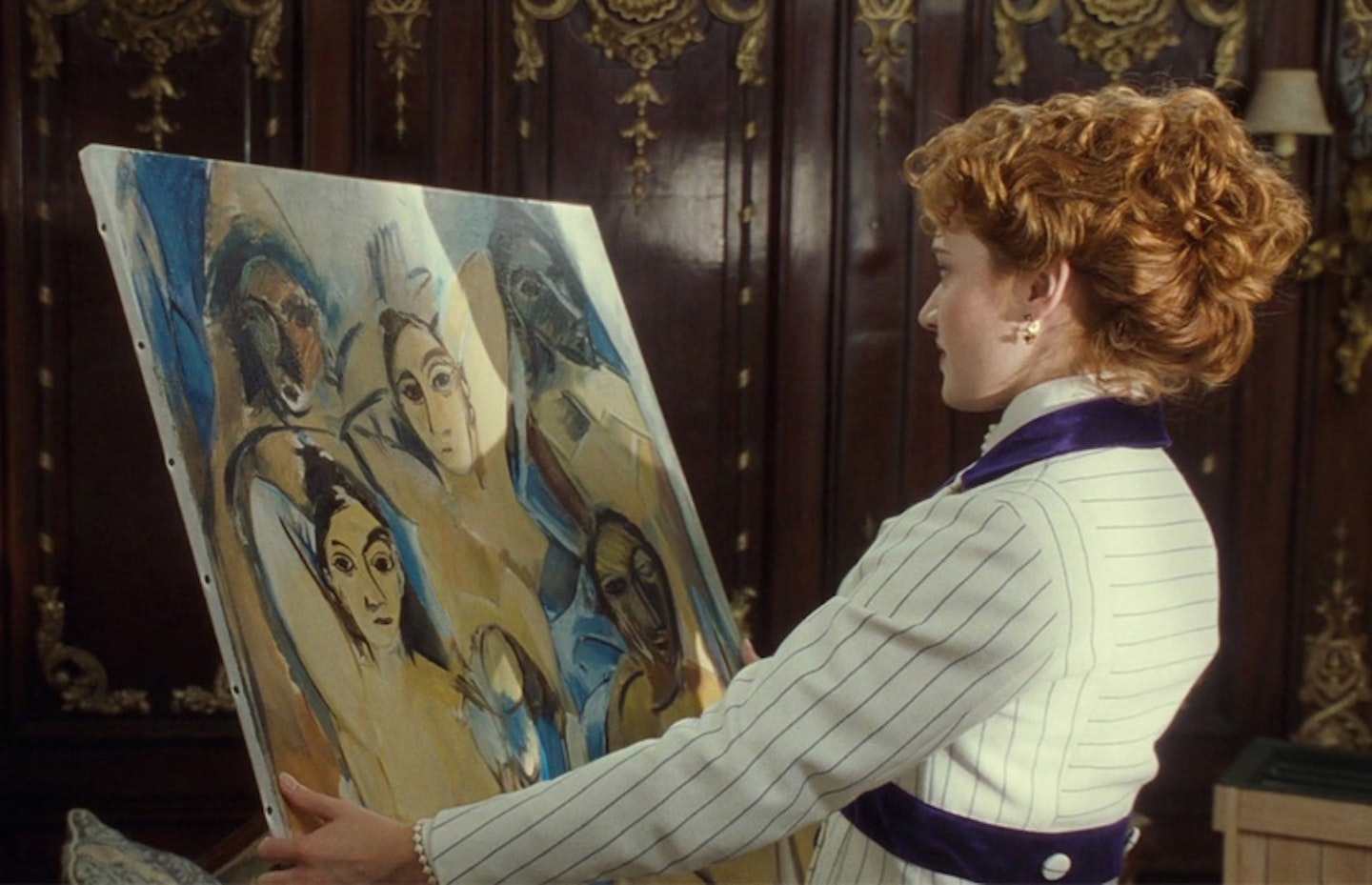
What’s the art?
Paintings by Claude Monet and Pablo Picasso – whom Cal (Billy Zane) confidently predicts “won’t amount to a thing.”
What happened?
Sound the spoiler klaxon, because the ship sank. And since no one was shouting, “Women and children and cubists and impressionists first!”, it seems safe to assume the pictures went down to a watery grave. The paint’s probably run a bit since then.
Whodunnit?
An iceberg.
What’s the bill?
Tricky. It’s a bit contentious whether the paintings are meant to be the ones that we know and love today. For instance, the Picasso looks very much like Les Demoiselles d’Avignon, but closer inspection reveals it to be merely very similar. The same can be said for the Monet. But paintings by both artists sell for millions, so think big. James Cameron is known for his research, and was certainly aware of the legends of lost art on the real life Titanic. Art supposedly surrendered to a watery grave included a bejeweled edition of The Rubaiyat, sold in March 1912 for £405 – equivalent to over £40,000 today.
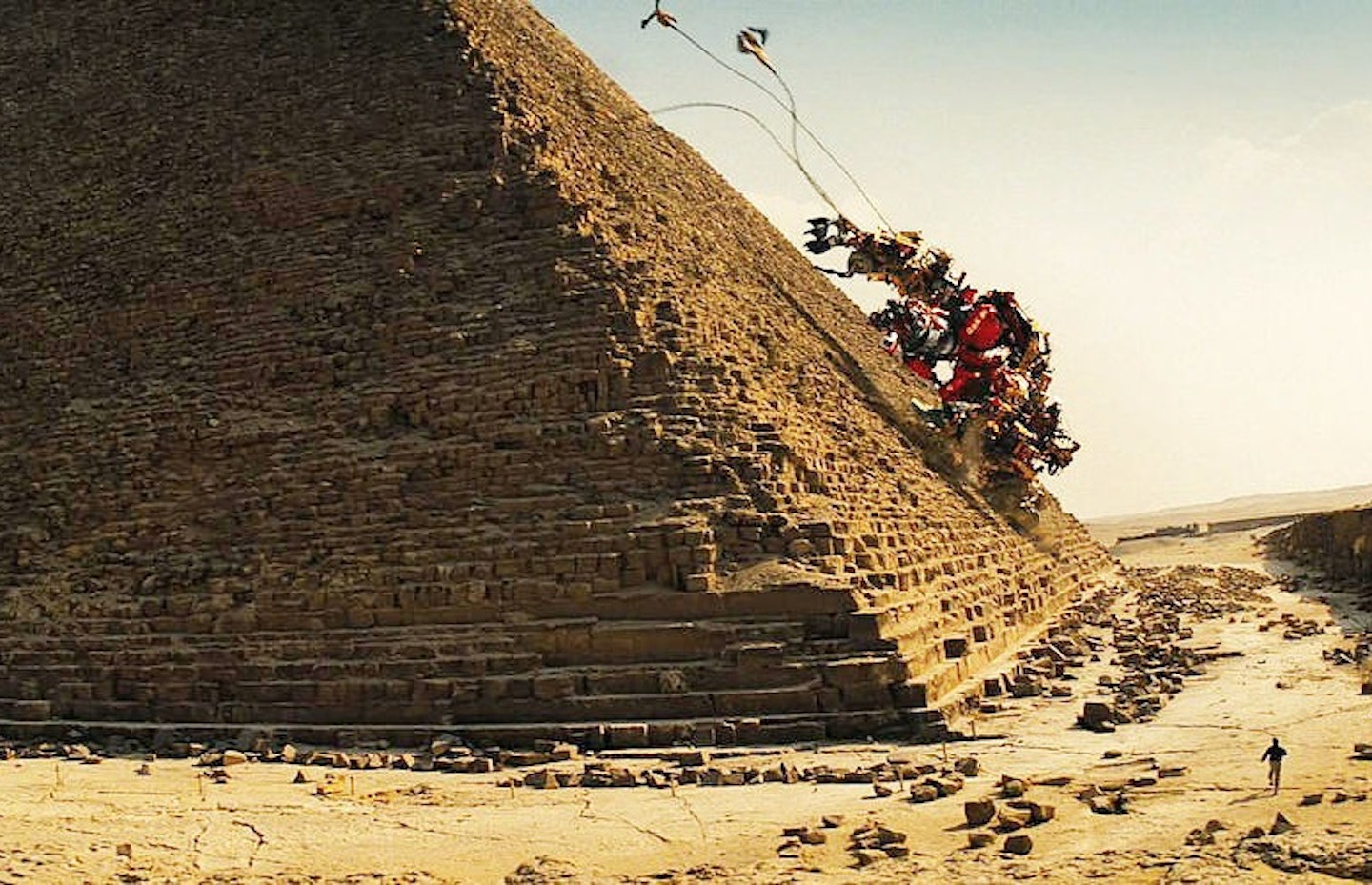
What’s the art?
The Great Pyramid of Giza.
What happened?
Said Pyramid is mercilessly demolished to uncover the Sun Harvester, which was concealed inside. With enormous bricks flying left and right, it’s like giant Lego Armageddon.
Whodunnit?
The Constructicon Devastator, at the behest of Megatron and the Decepticons. He’s also quite clumsy about climbing up the Pyramid, sending bricks flying on his ascent.
What’s the bill?
Pretty huge. Even leaving aside the incalculable cultural value of the Pyramids, they would be prohibitively expensive to rebuild. The bods over at LiveScience estimate the cost of building the Great Pyramid today to be around $5 billion.
What’s the art?
The iconic Guggenheim in New York, designed by architect extraordinaire Frank Lloyd Wright, as well as a video installation by Julian Rosefeldt, entitled The Opening.
What happened?
Poor old Clive Owen can’t even go to an art gallery without getting shot at. First, his pal Detective Bernie Ward is shot in the neck, leaving the floors covered with blood (notoriously hard to scrub off). Then the Guggenheim itself is shot repeatedly, leaving it with a bad case of bullet-hole-acne. And finally, Rosefeldt’s enormous video/glass installation hanging in the centre of the gallery is shot, and smashes on the floor.
Whodunnit?
Goons. Lots of goons. And while Clive Owen contributes his own fair share of bullet holes, he’s also the one who shoots at Rosefeldt’s huge artwork, causing it to smash to the ground.
What’s the bill?
Rosefeldt’s The Opening was created especially for the film, and a good thing too, considering its bullet-ridden demise. So while we can’t evaluate that one too easily, there’s no doubt that the cost of shooting up the Guggenheim itself is extremely high: when a three year restoration of the museum ended in 2008, the bill was $29 million.
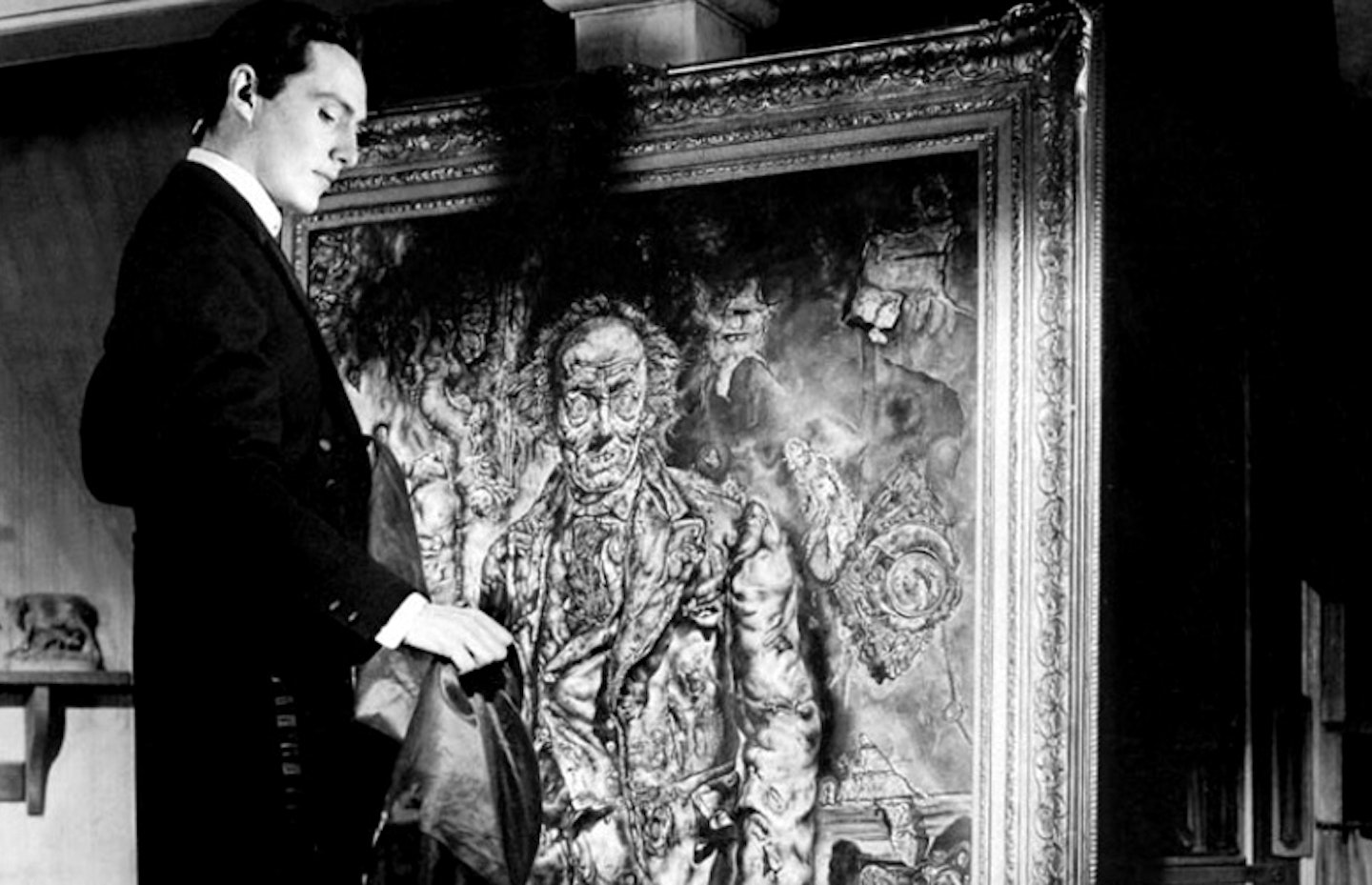
What’s the art?
A macabre, spookily decrepit portrait of Dorian Gray, painted by one Basil Hallward. Undoubtedly the most famous version was found in the 1945 adaptation, and was painted by Ivan Albright.
What happened?
The exact specifics vary slightly depending on which of the many adaptations you’re talking about, but the general gist is this: the canvas gets slashed and destroyed, causing Dorian Gray’s sins to finally catch up with and kill him.
Whodunnit?
Dorian Gray. Whether it’s suicide or accidental again depends on the version you’re talking about, but either way, he’s the one who sends his portrait to the grave.
What’s the bill?
If we’re talking about Albright’s painting (and, let’s face it, it’s by far the most iconic), the price is no doubt a lot. There’s no specific figure, however, since Albright gifted the painting to the Art Institute of Chicago.
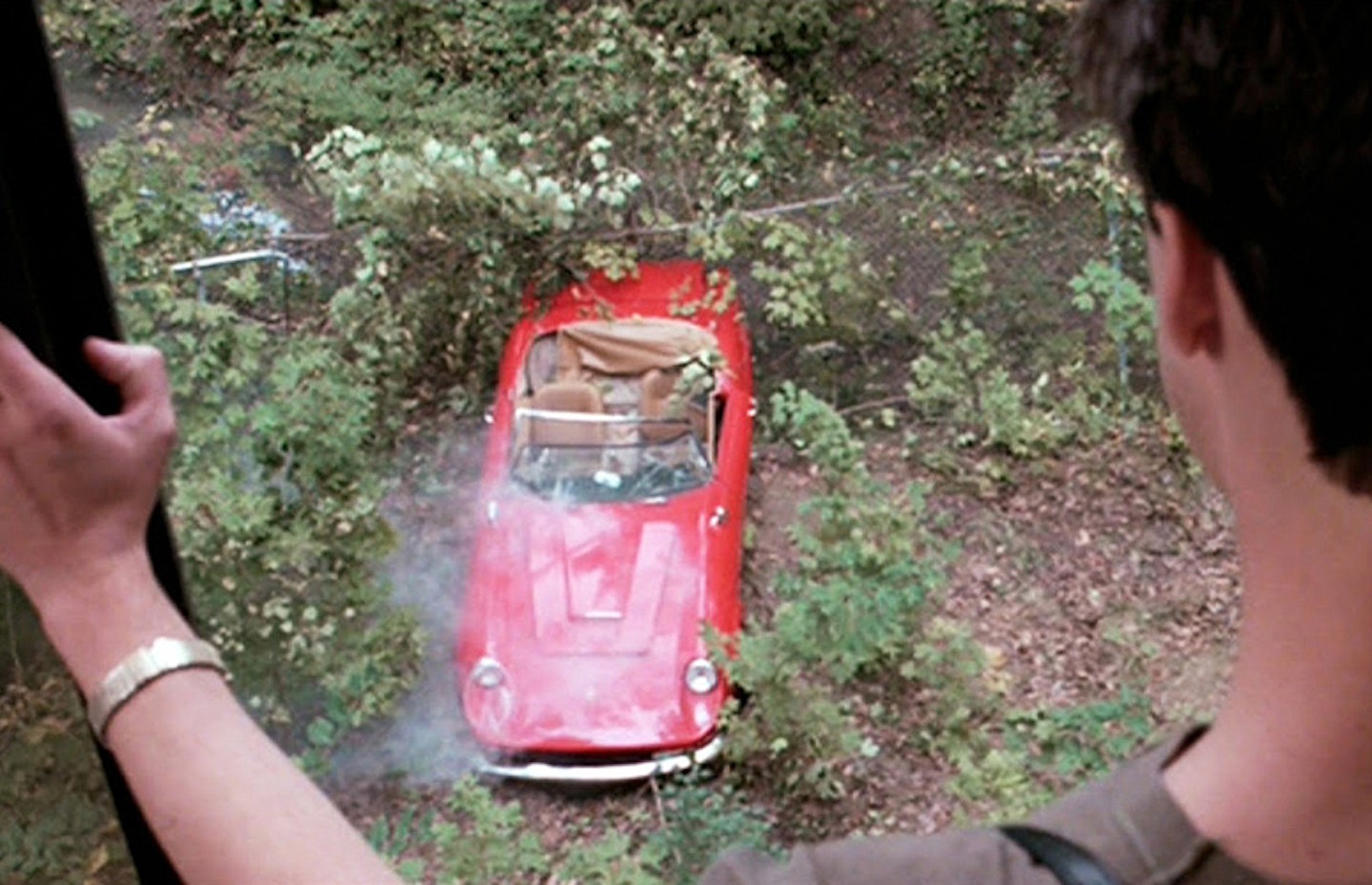
What’s the art?
The 1961 Ferrari 250 GT California – and yes, a car can be considered art when it’s this pretty. Fewer than 100 were made. Oh yeah…
What happened?
Having had a prang-free trip around Chicago (including a trip to the Art Institute of Chicago, though sadly with no glimpse of Albright’s Dorian Gray), the car is back in the garage when the real destruction happens. It’s pushed backwards and smashes through a plate glass window, down into a tree-filled valley.
Whodunnit?
Ferris’ best friend, Cameron Frye (Alan Ruck). It’s accidental, mind you.
What’s the bill?
Well, the car that actually smashed through the window sold in 2013 for $235,000. But that was a replica. The real Ferrari is worth a lot, lot more. A black model was bought at auction by Chris Evans (the DJ, not Captain America) for just over £5 million.
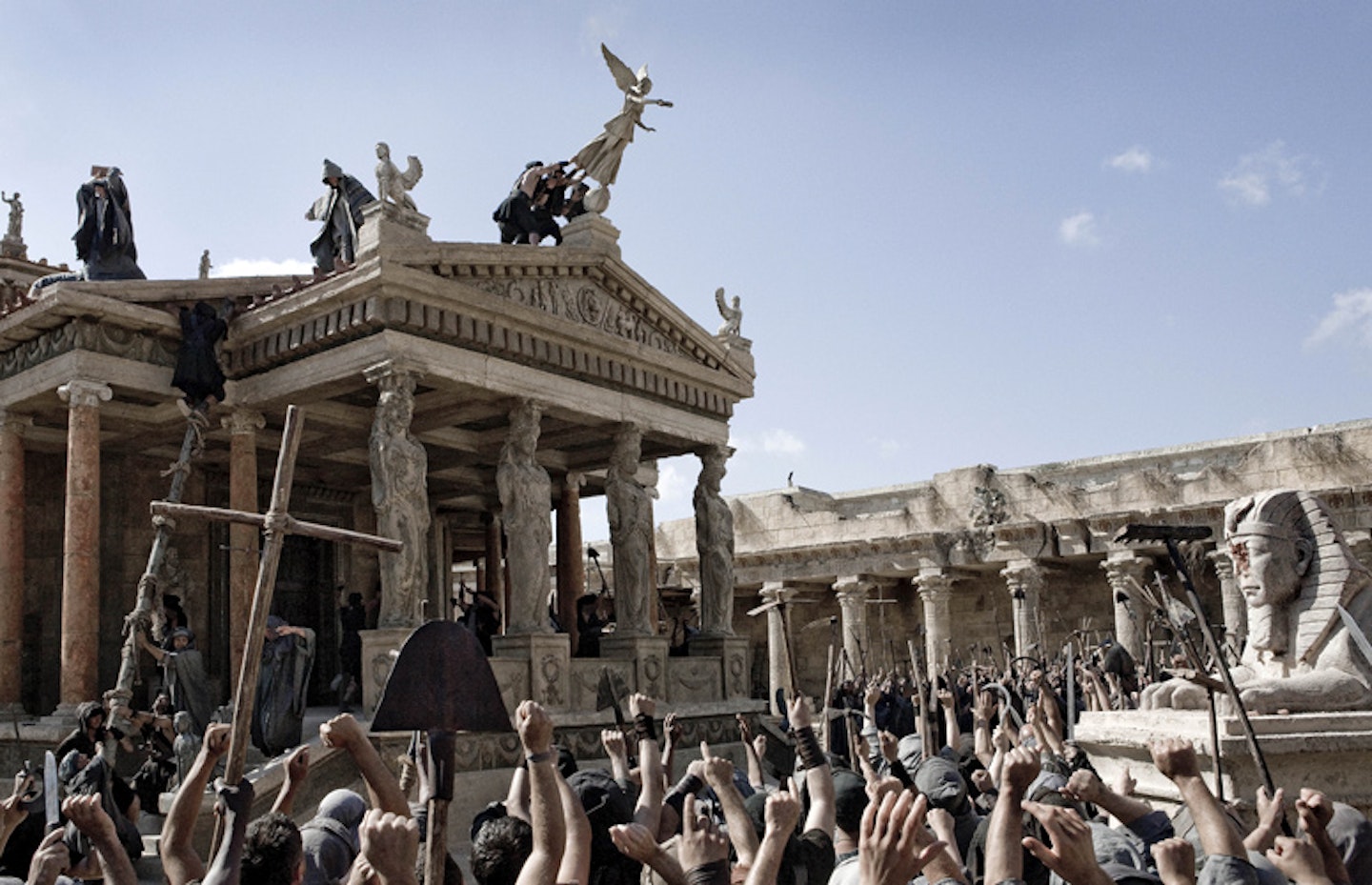
What’s the art?
A library – the Serapeum of Alexandria, an offshoot of the Great Library Of Alexandria – complete with pillars, statues and its many scrolls and manuscripts.
What happened?
In 391 AD, the Serapeum was entirely destroyed. Statues and pillars are pulled down, windows are smashed, scrolls are ripped, and the whole lot is burnt to ashes. It’s all rather sad. Worse still, it actually happened.
Whodunnit?
A fervent Christian mob, chanting “Hallelujah”, who have been led to this by Coptic Pope Theophilus. Hypatia (Rachel Weisz) tries to salvage some scrolls, but has no choice but to flee. Her father’s slave, Davus (Max Minghella) is also caught up by the mob’s fervor, and attacks and topples one statue all by himself.
What’s the bill?
Impossible to say. This stuff was irreplaceable, and its value is incalculable today even if the catalogues had survived to give us a list to start from.
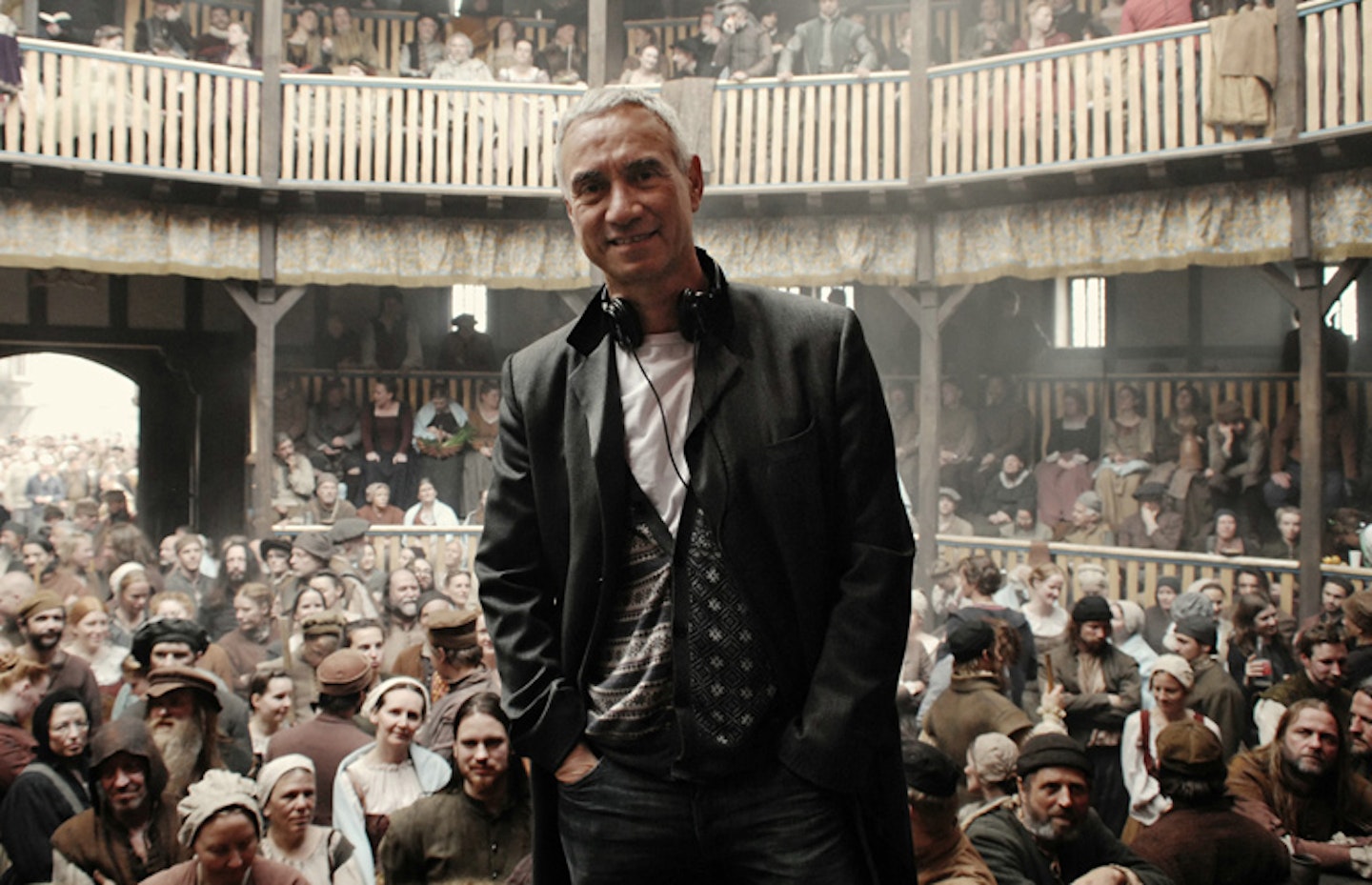
What’s the art?
Shakespeare’s plays. All of them. Even Two Gentlemen Of Verona.
What happened?
A terrible film happened, advocating the snobbish Oxfordian theory that Edward de Vere, Earl of Oxford, was the man behind Shakespeare’s pen.
Whodunnit?
Roland Emmerich, with a little help from Rhys Ifans and a shamelessly hammy Derek Jacobi: “What if I told you… Shakespeare never wrote… a single word…?”
What’s the bill?
Well, the film cost about $30 million, but the cost to literature is surely incalculable.